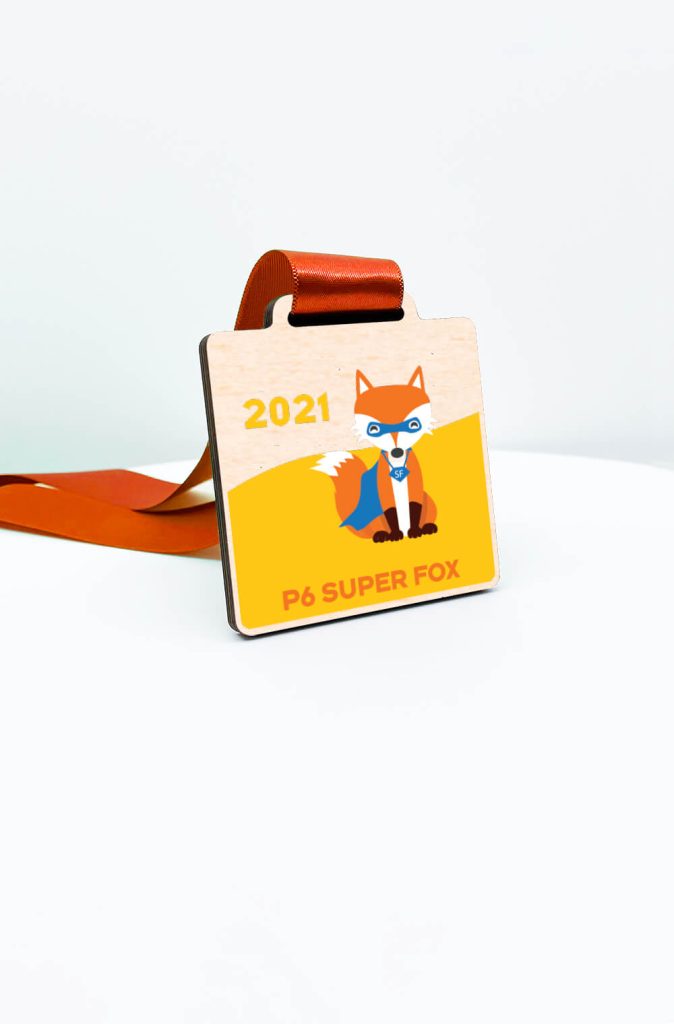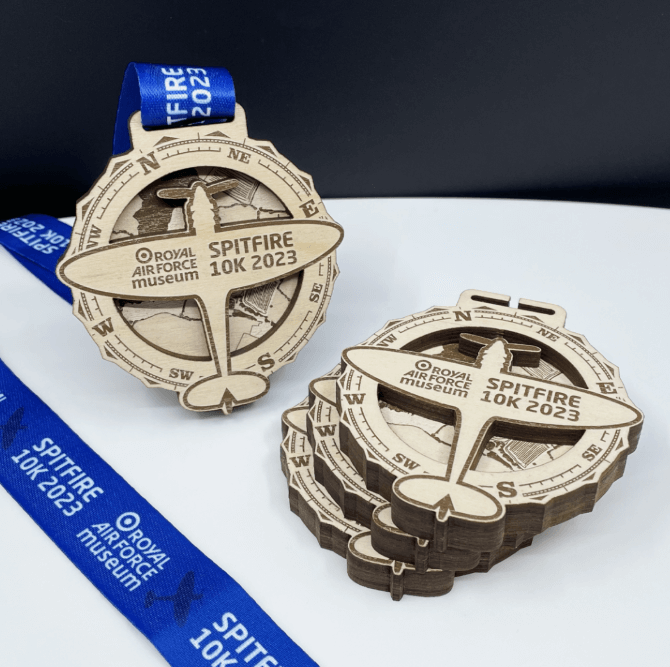Wooden medals have become more and more common at sporting events and recognition ceremonies over the past decade. They’re made of various types of wood and typically use engraved or laser-cut designs.
But like any material, they come with their own advantages and maintenance needs.
At MedalStudio, we’ve spent years crafting and perfecting awards of all kinds, including wooden medals, so we know just how special—and versatile—these awards can be.
That’s why, in this article, we’ll explore the fascinating history of wooden medals, discuss their pros and cons, and share expert advice on how to keep them looking their best for years to come.
Let’s get started!
History and Evolution of Wooden Awards
Medal-giving traditions date back to ancient civilizations, where materials like metal, stone, and wood served to honour achievement and mark significant occasions. The earliest wooden awards appeared in societies with rich woodworking traditions — particularly in forested regions of Northern Europe and parts of Asia.
These wooden recognition pieces held deep cultural significance in many societies. In Japan, for instance, craftsmen developed intricate woodworking techniques specifically for ceremonial objects, passing their methods down through generations.
Similar traditions emerged independently in Nordic countries, where wood craft played a central role in daily life and celebration.
Recognition ceremonies evolved significantly through the Industrial Revolution. Mass production made metal medals widely accessible, and they became the default choice for most events. Wood fell out of favour except in specific cultural contexts and traditional ceremonies.
But this wasn’t the end of the story.
Starting in the late 20th century, wooden awards began appearing again in new contexts. Traditional woodworking techniques merged with modern manufacturing methods, allowing for precise designs that could be produced at scale.

While ancient wooden awards were often born of necessity and local material availability, their modern counterparts represent deliberate choices about materials and meaning.
The IMEX-EIC Innovation in Sustainability Award, for instance, celebrates event professionals driving sustainability forward through innovation and collaboration. This trend reflects a broader movement towards sustainable practices in the events industry, with wooden awards playing a crucial role in this shift.
Types of Wood Used
Wooden awards are typically made of the following:
- Birch features a light, uniform appearance and takes well to laser engraving, making it particularly popular for detailed designs and intricate patterns.
- Cedar red offers natural resistance to moisture and decay while providing a distinctive reddish hue and pleasant aroma that can last for years.
- Black ash possesses a striking dark grain pattern and excellent durability, though its increasing rarity due to invasive species has made it a premium choice.
- Oak remains a traditional favourite for its exceptional strength and prominent grain patterns, plus its historical significance in award-making across cultures.
- Walnut provides a naturally dark, rich colour that requires minimal treatment, along with exceptional stability that resists warping.
- Driftwood, while less common, creates unique pieces with a weathered appearance and irregular patterns.
Pros and Cons of Wooden Awards
Wooden awards offer a unique and eco-friendly alternative to traditional materials, but they come with their own set of considerations.
The following table outlines the key pros and cons to help you determine if wooden awards are the right choice for your needs.
| Pros | Cons |
| Lightweight and comfortable to wear | Can warp or crack if exposed to moisture |
| Each medal has unique wood grain patterns | More fragile than metal medals |
| Made from renewable materials | Requires careful storage |
| Can be repaired if damaged | May feel less substantial than metal medals |
| Natural warmth and tactile feel | May feel less substantial than metal medals |
When exposed to moisture, wooden medals can warp or deteriorate over time, a particular concern for events in humid climates or outdoor settings where medals might encounter rain or sweat. However, proper sealing and finishing techniques can significantly extend their lifespan.

The natural variations in wood grain mean that no two wooden medals are exactly alike, which can be either an advantage or disadvantage depending on the event’s goals.
Manufacturing considerations also shape their practical application. The material costs typically run lower than metal, though the crafting process often demands more time and skill.
Maintenance requirements also differ significantly from metal medals.
Wood responds to its environment, meaning participants must take care to store their medals properly to prevent cracking or warping. Yet these same properties allow wooden medals to develop a natural patina over time, telling the story of their age through subtle changes in colour and texture.
This ageing process affects each piece differently, influenced by factors like wood type, environmental conditions, and handling.

The long-term preservation of wooden medals requires consideration of storage conditions. Temperature fluctuations and humidity levels play crucial roles in maintaining their condition.
In contrast to metal medals, which might tarnish but generally maintain their structural integrity, wooden medals can experience more dramatic changes over decades.
Maintenance of Wooden Awards
Wooden medals should rest in environments with stable humidity levels, away from direct sunlight and extreme temperature fluctuations.
A simple cloth bag or display case can provide adequate protection, though some collectors prefer purpose-built display boxes that control environmental conditions.
Basic maintenance requires minimal effort but consistent attention.
Regular dusting with a soft, dry cloth prevents buildup that could affect the wood’s finish. If cleaning becomes necessary, a slightly damp cloth — never soaking wet — can remove more stubborn dirt. The medal should be thoroughly dried immediately afterward to prevent moisture absorption.
Long-term preservation depends largely on the initial treatment of the wood and ongoing care practices.
Most wooden medals come pre-sealed with protective finishes that guard against moisture and wear. These finishes may need renewal every few years, depending on storage conditions and handling frequency.
Professional wood restorers can repair significant damage, though prevention through proper care remains the best strategy for ensuring these meaningful awards endure through time.
Wooden Medals: A Choice Worth Preserving
Wooden medals represent a fascinating intersection of traditional craftsmanship and modern event planning, carrying forward ancient practices of recognition while adapting to contemporary needs and values.
Their enduring appeal stems from both their historical significance and their ability to tell unique stories through their natural materials, even as they require thoughtful care to preserve these stories for future generations.
If you have any questions regarding our products, please do not hesitate to email us at [email protected] or call us at 01377250449.
Updated: 11/07/2025